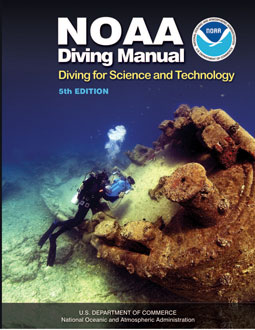Convulsions in the Water: Dive Accident Management and Emergency Procedures
A convulsion in itself rarely causes injury, but the secondary consequences for a scuba diver can be disastrous. First, the intense muscle contraction of the neck and jaw can cause the diver to spit out the mouthpiece, which is difficult to reinsert. Consequently, the diver is likely to drown unless rescued quickly. There is a risk of pulmonary barotrauma leading to AGE (arterial gas embolism) if a diver ascends too rapidly or out of control; however, the threat of drowning outweighs that of AGE.
The rescue of a convulsing diver is a complex subject. This is only a brief guide that discusses just a few of the considerations.
If a full-face mask is being used, it should be possible for the affected diver to breathe. However, if the diver is breathing from a standard scuba regulator, it is usually not worthwhile to attempt to reinsert the diver’s mouthpiece. As soon as the initial phase of the convulsion is over, the diver should be taken to the surface using a controlled ascent rate, without unnecessary delay. The tradeoffs are a risk of embolism from too fast an ascent, or certain drowning if ascent is delayed. The risk of embolism is the better option and the diver should be taken to the surface. At the surface, treat for near drowning according to signs and symptoms. Use surface oxygen as first aid. A diver who has a significant decompression obligation or is exhibiting signs and symptoms of DCS or AGE should be transported to the nearest medical facility and if necessary, to a recompression chamber.
(Source: NOAA Diving Manual: Diving for Science and Technology, 5th Edition; 2013, Best Publishing Company)
SUGGESTED READING
|
NOAA Diving Manual, 5th Edition Used by divers everwhere, the NOAA Diving Manual 5th Edition is the most comprehensive resource for learning about dive equipment, dive planning, decompression, and emergency medical care of an injured diver. Chapters also include more advanced concepts such as physics and physiology, mixed gas diving, surface-supplied diving, saturation diving, and the list goes on. Need a textbook for your next course? Use this manual! The manual is the perfect resource for scientific divers, commercial, military, public safety, recreational divers, and dive leaders! |

